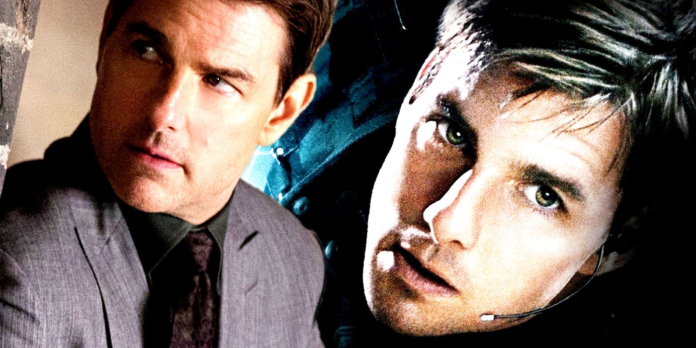Tom Cruise’s Ethan Hunt doesn’t fire a gun in 1996’s Mission: Impossible, and the reason why is a testament to the series’ unique position within the action genre. Action heroes have always been quick to use any method at their disposal to take on enemies, and more often than not, that includes guns. Prior to the release of the first Mission: Impossible, the action genre was extremely firearms-focused, with films like Die Hard, Lethal Weapon, and Rambo: First Blood Part 2 still fresh in the memory. However, this action model was not something Mission: Impossible aimed to emulate when it was released in 1996.
Originally a successful TV series that ran from 1966 to 1973 before enjoying a brief two-season revival from 1988 to 1990, Mission: Impossible wasn’t on any studio’s radar as a concept for a film, with TV shows not piquing Hollywood interest. Things have certainly changed since, and a big reason for this was Tom Cruise’s efforts to make Mission: Impossible happen. As detailed by film critic Amy Nicholson in a 2018 article for The Guardian, Cruise was looking for a way to get into the action genre without having to fire any guns at all – something he’d managed to achieve within his other films up to that point.
Tom Cruise Wasn’t Interested In Being A Traditional Action Hero
Prior to Mission: Impossible, Cruise’s Hollywood resume didn’t resemble the career path of an action star. The closest Cruise came pre-M:I to an action feature was Top Gun, and even then, Tony Scott’s 1986 blockbuster was atypical of the genre, focusing on Navy airmen instead of boots-on-the-ground soldiers. There was something compelling about action for Cruise, though. He wanted to find a different approach to it and, as Nicholson’s Guardian piece details further, he wanted to deliver thrills while avoiding the gun-laden trappings of the traditional action model. This is what drew Cruise to Mission: Impossible.
What most attracted Cruise to the idea of Mission: Impossible was that its heroes didn’t resort to mindless hails of gunfire in order to complete their objectives. There was an ingenious quality to the action of Mission: Impossible, and Cruise wanted to tap into that. This meant that guns were going to take a backseat to the action, but not at the expense of tension or thrills. Cruise wanted to bring out the intensity of the Mission: Impossible TV show’s spy-thriller qualities and make something that had yet to be seen in the action genre.
Cruise’s Disinterest In Guns Gave Mission: Impossible A Boost
Ultimately what ended up happening with Mission: Impossible was that Cruise’s Hunt did not fire a gun even once throughout the film’s entire one-hour and 50-minute runtime. This is quite the feat for an action film, particularly for an action film that was released in the 1990s. Guns would eventually play a significant role in the Mission: Impossible franchise, but that should not obscure how valuable that initial desire to explore an action film without guns actually was. This desire ensured that the first Mission: Impossible explored alternate means of delivering action and suspense, even if the bad guys still met a fatal end.
Related: Mission: Impossible – Ethan Hunt’s 10 Coolest Bad Guy Kills
By not giving Ethan Hunt a gun, Mission: Impossible became richer in its action, and its death-defying set-pieces have since become a staple of the series. This has famously been done through sometimes stunts that push Tom Cruise’s physical boundaries and those which have previously been thought of as too risky to pull off. Each new Mission: Impossible entry ups the ante in this respect, and it’s arguable that Tom Cruise’s iconic stunt work might not have come to be had he not remained steadfast in his desire to keep guns on the periphery of the action.
Source: The Guardian




